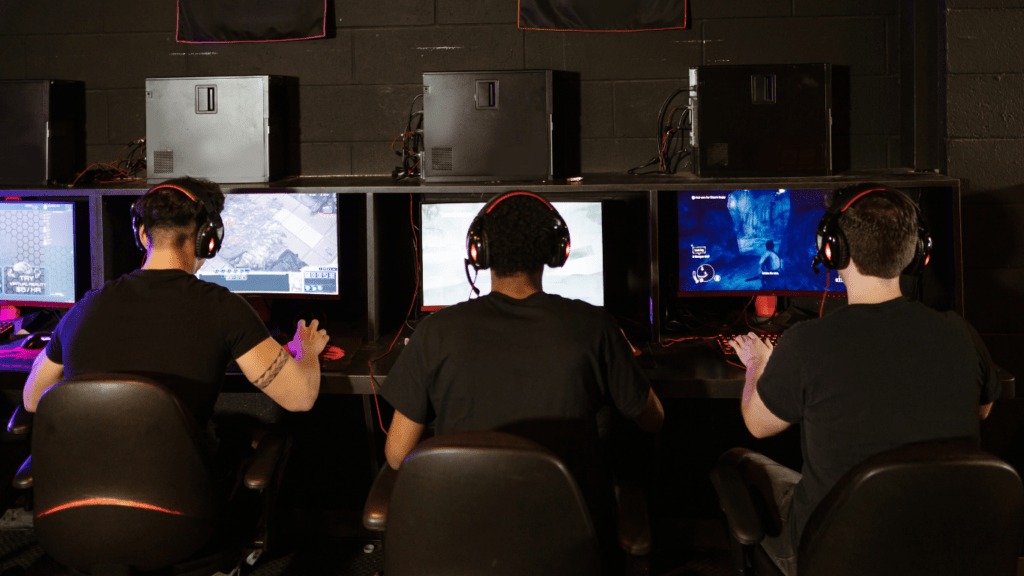The draft phase in competitive gaming isn’t just a prelude—it’s a battlefield of its own. Every pick and ban shapes the flow of the match, turning the tide before the game even begins. I’ve seen countless tournaments where a well-thought-out draft strategy made all the difference between victory and defeat.
Understanding The Draft Phase In Competitive Gaming
The draft phase in competitive gaming involves the selection and banning of characters, champions, or units. Precision in this stage sets the foundation for team synergy and counters opponents’ strategies.
The Importance Of Power Picks And Bans
- Power picks and bans revolve around recognizing the most impactful choices in the current meta.
- These are options with superior abilities or compatibility that can dominate games.
- When I secure or deny such selections, the balance shifts significantly. For example, in “League of Legends,” champions like Zeri or Milio may heavily influence matches due to their game-defining attributes.
- Bans provide another layer of strategy by eliminating threats that opponents rely on.
- Effective bans reduce enemy impact while opening opportunities for favorable counterpicks.
- Teams often target comfort picks to disrupt opponents’ gameplay, giving their players an upper hand during critical moments.
How Draft Phase Impacts Tournament Outcomes
Draft outcomes directly influence victory consistency in tournaments. Optimal drafting leads to cohesive team compositions that excel across different phases of gameplay. I’ve observed that strong drafts often ensure counters to key threats and alignment with optimal win conditions.
In high-stakes tournaments, drafting is also about mind games. Anticipating the opposing team’s strategies forces them into reactive picks. For instance, in “Dota 2,” denying meta-defining heroes like Magnus early forces adversaries into less effective combinations, limiting their strategic depth.
Aligning draft decisions with team strengths maximizes player performance. When players operate within their preferred roles and champion pools, execution becomes more precise, enhancing the likelihood of tournament success.
Key Elements Of A Winning Draft Strategy

Effective drafting combines:
- preparation
- adaptability
- strategic foresight
Each component enhances a team’s ability to gain an advantage during the draft phase.
Researching Opponents’ Strengths And Weaknesses
Analyzing opponents helps identify patterns in their drafting preferences and performance. I study their most-played champions, character synergies, and favored playstyles. This research uncovers vulnerabilities, whether it’s poor execution of certain compositions or reliance on specific champions. For example, if an opponent consistently excels with high-damage carry champions, targeting bans toward those picks disrupts their comfort zone. Tailoring draft strategies based on these insights maximizes counterplay potential.
Prioritizing Meta-Changing Champions Or Characters
Securing game-defining champions gains an instant advantage. I track meta trends and evaluate which champions dominate the current landscape. For instance, power picks like Kassadin in “League of Legends” or Sojourn in “Overwatch” possess abilities that can swing games due to their adaptability or raw strength. Targeting these champions early ensures my team benefits from their impact while denying this edge to opponents. When key meta-changing heroes remain contested, I analyze value versus counterplay options.
Flex Picks: Maximizing Versatility And Strategic Depth
Drafting flexible champions offers adaptability. I prioritize selections that can function across multiple roles or strategies, making it difficult for opponents to pinpoint my team’s game plan. For example, flex picks like Akali, who performs in both mid and top roles in “League of Legends,” provide versatility while maintaining strong synergy with any composition. Flexibility corners opponents into suboptimal bans or reactive picks, creating opportunities for my team to dominate during later draft stages.
The Psychology Behind Effective Picks And Bans
Drafting involves more than statistical analysis; it taps into psychological factors that can influence opponents’ performance. By understanding and leveraging these, I can gain a decisive advantage in tournaments.
Countering Opponent Strategies
Anticipating how opponents value specific picks or bans is crucial when countering their strategies. I prioritize reviewing their previous drafts to identify patterns in champion priorities or preferred playstyles. For example, if an opponent excels with tempo-based compositions like Evelynn junglers in “League of Legends,” banning their cornerstone champions disrupts their momentum. Counter-picks gain strength if I anticipate their high-priority choices, forcing mismatched lanes or suboptimal team synergy.
Timing plays a critical role. I often bait opponents into revealing key picks early, allowing me to draft counter options later in the phase. This layered approach psychologically pressures them to adapt while I retain strategic control.
Forcing Uncomfortable Choices For Opponents
Imposing difficult decisions restricts opponents’ options and creates drafting mistakes. I achieve this by positioning strong flex picks that conceal my team’s intentions. Champions capable of filling multiple roles, such as Sett or Akali, increase uncertainty, making opponents second-guess their bans or picks.
Simultaneously, I target their comfort picks when banning or locking meta-defining choices like Aphelios or Malphite. By denying them preferred strategy-enabling champions, I indirectly push them into drafting suboptimal compositions they aren’t fully prepared to execute.
Psychological leverage ensures my draft phase gains both strategic and mental advantages over the opposing team.
Tips For Developing Your Tournament Draft Mastery
Effective drafting requires practice, adaptability, and in-depth knowledge of the game’s evolving meta. Mastering these areas refines your approach to the critical draft phase.
Practicing Draft Scenarios With Your Team
Team practice in simulated draft settings sharpens coordination and decision-making. I set up mock drafts to replicate scenarios based on previous opponent patterns or hypothetical situations, ensuring teammates understand roles and counter strategies. Practicing multiple compositions allows players to develop synergy with varied team setups, reducing reliance on predictable strategies. I also encourage post-draft reviews to analyze what worked and discuss adjustments for stronger execution.
Adapting Strategies To Ever-Changing Metas
Draft success depends on exploiting and responding to the dynamic game meta. I monitor patch updates and professional matches to identify meta-shifting picks or bans relevant to current tournaments. Flexibility is key; I emphasize learning power picks quickly and experimenting with alternative strategies during downtime to prepare for sudden changes. By tracking emerging trends and staying proactive in adapting drafting priorities, I maintain an edge over less-prepared opponents.





